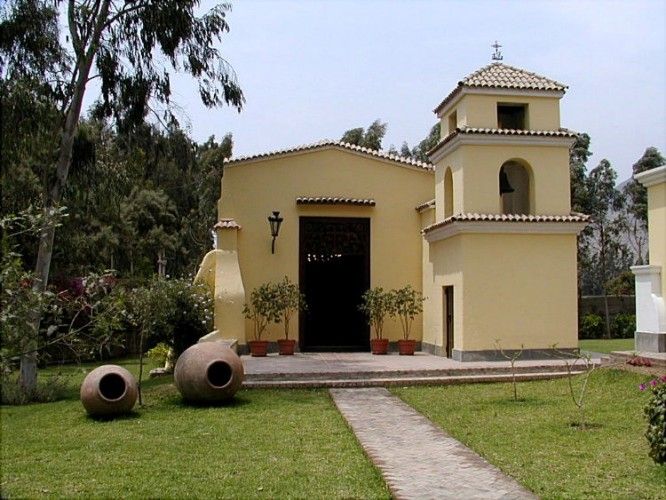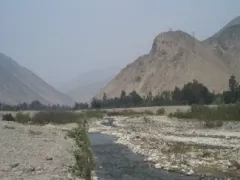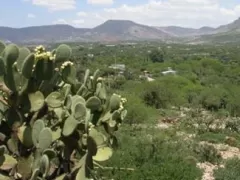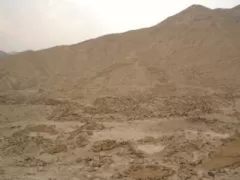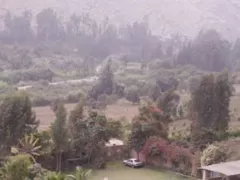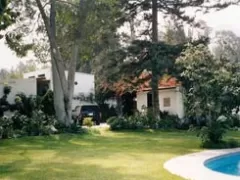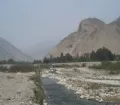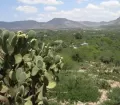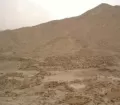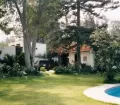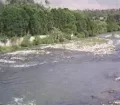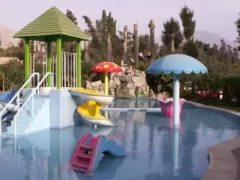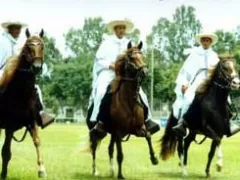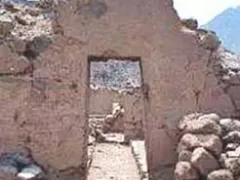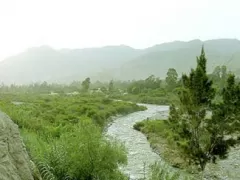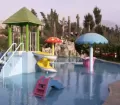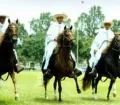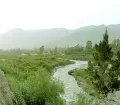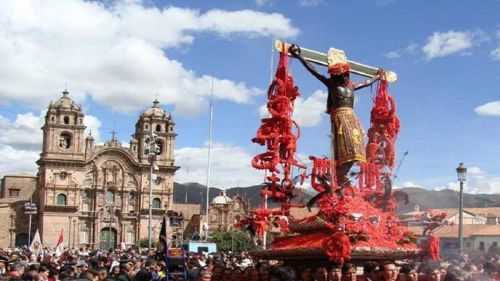The district of Cieneguilla was formerly a part of the district Pachacamac and officially created as independent district on the 3rd of March 1970. It is located just around 25 km to the east of Lima. Due to its spring like climate and sun throughout the year the small and lovely town of Cieneguilla and the whole district is a popular weekend destination especially in the winter months for people living in foggy Lima.
Cieneguilla offers the visitor beautiful wild areas, lots of nature and an attractive countryside. When you need rest and relaxation from hectic Lima, the rural area of Cieneguilla is the right place to go. Many nice hotels and restaurants welcome you to enjoy not only the lovely food but also the peacefulness and quietness of the region. For all sports lovers, Cieneguilla offers the possibility of doing horse ridings (not only on the famous Peruvian horses - "cabellos peruanos de paso fino"), mountain cycling, motocross, climbing and in the summer months boating on the Lurín river. A lot of hotels and campsites have pools, small (petting) zoos, playgrounds for kids and sport facilities.
Facts & Figures about Cieneguilla
The district of Cieneguilla is located around 25 km east of the historical City Center of Lima in the Valley of the Lurin River. The district has an area of 240.33km². Cieneguilla has a warm and dry climate with spring like temperatures throughout the year. The Valley of the Lurin River and Cieneguilla itself was not affected by the unregulated and unplanned urban growth like the other two Valleys of Lima (Valley of the Chillón River and Valley of the Lurín River) and therefore still has lots of beautiful wild areas, nature and an attractive countryside.
The district of Cienguilla is limited by the district of Ate and Chaclacayo to the north, by the district of Antioquía (Province of Huarochirí) to the east and to the south and west by the district of Pachacamac.
Brief History of Cieneguilla
In pre-Inca times (until 1470) the area today known as Cieneguilla was like most other parts of today's Lima already inhabited. Evidence can be seen at the archaeological site of Huaycán from the Itchma culture. Huaycán was a center where the indigenous people lived their cults, rites and ceremonies and did astronomical observations.
Throughout the Inca time (1470 to 1533) the Camino Real (main Inca trail) from Mamacona (one main cultural center of adoration of this time) to the Andes connected the centers of Jauja, Tarmatambo, Pumpo, Huarochirí, Cieneguilla and Pachacámac. The region quickly developed and had around 25,000 inhabitants.
At the beginnings of Colonial times (1533 to 1821) the Spanish conquerors traveled along the Camino Real to subdue the entire country. On their way they not only killed indigenous people but also destroyed many magnificent, ancient constructions and temples. In 1539 Nicholas de Rivera became the "first" rightful owner of the territory of the Lurín and Mala Valleys. In 1565 the Valley was included in the municipality of Lima. In 1615 the economical important Hacienda of Cieneguilla was purchased by the monk order "Compañía de Jesús" which enlarged the properties and the wealth of the region. By the end of the 18th century the Hacienda was one of the biggest and most important in the whole area and included 16 farms with more than 500 inhabitants. Next to the cultivation of crops, fruits and vegetables the Hacienda of Cieneguilla produced essential raw materials like mesquite wood. The best horses and bulls were breed on the properties of the hacienda.
During the Republican period the district of Pachacamac was created in 1876. At the beginning of the 20th century most of the nearly 30,000 hectares of the Hacienda of Cieneguilla were sold in small plots. On the 3rd of March 1970 the Cieneguilla region was separated from the district of Pachacamac and the district of Cieneguilla officially created.
Places to visit & attractions in Cieneguilla
Cieneguilla is known for its amazing and beautiful countryside with lots of nature and untouched areas. The Lurín valley is an area characterized by agriculture and farming. Cieneguilla invites you with calmness, peace, sunshine throughout the year and lovely hotels, campsites and restaurants with all sorts of recreation facilities. Discover this beautiful environment and enjoy your stay!
Enjoy the possibilities of horse ridings, not only on the famous Peruvian horses ("cabellos peruanos de paso fino"), mountain cycling, motocross, climbing and in the summer months boating on the Lurín river.
Along the Lurín River you find many archeological remains from pre-Hispanic times. The archaeological ruins of Huaycán, remains of indigenous communities, are probably the most important ones in the Cieneguilla district. Worth mentioning are also the "Huaca Grande" and the "Puente Panquilma". Unfortunately the valuable archeological complexes are suffering from deterioration.
Worth visiting: The former Hacienda of Cieneguilla, once the biggest and most important hacienda of the whole area.
While driving, cycling, boating or walking through Cieneguilla you can enjoy an amazing ecosystem with numerous wild exotic plants, many birds, clean and dry air. Unbelievable when you remember that you are just a few kilometres away from the foggy, air-polluted, hectic and loud metropolitan of Lima.


